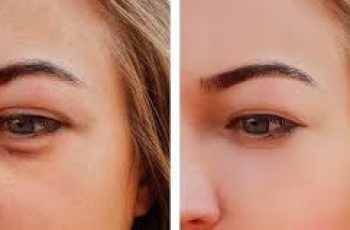
Skincare Benefits of Lactic Acid – Why Is Lactic Acid Good for Skin?
We’ve been discussing facial acids for a little while now, and if you’ve read our previous posts you will have a better understanding of what AHAs and BHAs are and their benefits for the skin, this guide is focusing on lactic acid.
So, what exactly is lactic acid, where is it derived from and how does it differ to the other acids out there. Let’s explore the perks of using this acid and why it has been a firm favourite with beauty experts and brands, seeing as it’s been used for centuries that really doesn’t come as no surprise.
We explore a little further into what lactic acid does for your skin and how we can use this glow-giving AHA the correct way!
What Is Lactic Acid?
Lactic acid is part of the AHA family and is derived from natural sources such as soured milk and fruit sugars. It also appears naturally in the body causing a build-up after you’ve had a workout or exercised.
It also provides numerous skin treating properties in similar ways to other acids, like glycolic, with a number of unique benefits to making your skin smoother, firmer and blemish-free! Unlike other acids, lactic acid is an alpha hydroxy acid which offers exfoliation and is a humectant which acts as a moisture trap by pulling water to the outer layers of the skin, allowing your face to look plumped youthful and fine lines and wrinkles noticeably reduced.
It was in the late 1800s that Swedish chemist Carl Wilhelm Scheele who first isolated the compound from sour milk. This then lead to the German pharmacist Boehringer Ingelheim who uncovered how to mass-produce lactic acid using fermented sugar and starch in sour milk through bacteria. The structure of lactic acid means the molecule is larger and can’t penetrate as deeply into the skin, instead it’s more of a surface treatment for the skin, by exfoliating and making skin firmer.
With lactic acid being considered the most gentle of the facial acids which makes it a good one to start with when introducing an AHA into your skincare routine, especially if you have a more sensitive skin type.
Fast Facts
Type of Ingredients
Acid/exfoliator
Main Benefits of Lactic Acid
Firmer, thicker skin
Reduction in fine lines and wrinkles
Reduction in breakouts such as spots
Who Should Use Lactic Acid?
In general, anyone is able to use lactic acid as it benefits all skin types. Just be sure to check with your dermatologist if you have any concerns.
How Often Can You Use Lactic Acid?
It’s recommended for use once a day, but to begin with should be used every other day.
Lactic acid works well with hydrating ingredients, such as hyaluronic acid.
Don’t Use Lactic Acid
Not to be used with other acids and exfoliates like AHA or benzoyl peroxide. Retinol should also be avoided.
What Are the Skin Benefits of Lactic Acid?
Much like it’s AHA cousins, lactic acid has many skin benefits with some unique properties thrown in for good measure;
Lactic Acid Kills Bacteria
Lactic acid is able to treat and prevent any bacteria from infections on the skin. It was first discovered in a study in 1985 on newborn babies, it was later used for adult skin and found to have the same results by clearing acne breakouts and skin irritation.
Lactic Acid Lessens Fine Lines and Wrinkles
When concentrates of 5-12% were tested and both levels are able to penetrate into the dermis and epidermis of the skin. Skin is left feeling firmer, thicker and resulting in fewer fine lines and wrinkles, understandably the strength of the acid will limit the level of the skin it can work through.
Lactic Acid Reduces Acne
Using lactic acid has been proven (an impressive amount of times) to reduce acne breakouts from developing and also treating any that are currently visible on the skin. This is also the reason lactic acids is included in a number of body care lotions and moisturisers too in order to help treat blemishes on other areas such as chest and back.
Lactic Acid Increases Cell Turnover
With the exfoliating and moisturising properties of lactic acid, the skin is able to increase the rate of skin turnover. This does naturally happen over a cause of 30 days, but does slow down due to age and the other aggressors. LA can also stimulate collagen production and strengthen the skin resulting in firmer, plumper and younger-looking skin.
Lactic Acid Helps Skin to Hold Moisture
This is unique to lactic acid in comparison to the other AHAs available this has something to do with the fact that lactic acid is a humectant. LA is able to lock in hydration which is ideal for the new skin revealed from the chemical exfoliation to maintain and hold onto moisture.
Lactic Acid Can Even Out Skin Tone
Lactic acid has notable benefits to the skin when it comes to evening out the tone, from any pigmentation, such as dark spots, acne scarring and melasma. LA is considered one of the most gentle of alpha hydroxy acids meaning it’s great to use as an introduction to facial acids. It is also a firm favourite amongst beauty professionals when using it in chemical peels. This can lead to the skin become irritated due to the higher concentrates used in professional treatments. Bare in mind that your skin can also become sensitive to exposure to the sun so ensure you lather up on the SPF.
Lactic Acid Can Reduce the Appearance of Pores
Depending on the strength of the lactic acid used on your skin is connected to how successful it is at helping reduce the appearance of pores. AHAs typically only work on the outer layers of the skin, but lactic is one of the few acids structured from a larger molecule, that can penetrate deeper into the skin depending on the level of percentage in the concentrates.
The above are some properties of lactic acid that aid your skin to look and feels its best. Teaming this AHA with other hydrating, cleansing and moisturising products will give your skin an overall perfected and luminous look.
How to Use Lactic Acid
Lactic acid is very versatile and is found in a number of skin and body care products;
Face wash
Face cleansers
Face cream
Face serum
Face masks
Hand creams
Body wash
Body moisturisers
You may know about the tales of Cleopatra and her infamous milk baths? Well the ancient queen was certainly onto something when it came to the skin-pampering benefits of lactic acid. It is able to slough away dead skin cells without disrupting the pH levels in the skin barrier.
One thing you have to remember is that although lactic is more gentle, it is still an acid and will cause irritation if used incorrectly, here are simple tips about this AHA to help you see optimal results when using it in your skincare routine.
It’s best to remember the saying “three on and three off” by this I mean to use the acid 3 nights in a row, then have a break for 3 nights instead choosing more hydrating products.
Any skin type can use lactic acid, however using too much too often will lead to inflammation, which will actually accelerate the ageing process.
If you already have irritated or red skin it is best to avoid using lactic acid altogether.
To reap the benefits most by not using a physical scrub and to apply after cleansing, but before moisturising allowing enough time for the lactic acid to bring a glow back to the face.
It is also best to follow the advice of a professional. When considering adding lactic acid or using it for the first time, consult your dermatologist or GP for advice.
Which Skin Types Can Use Lactic Acid?
All skin types would benefit from using lactic acid in moderation, any skin type will start developing problems if the acid is used too often.
Dry Skins- Due to the humectant benefits of lactic acid dry skins, over the counter formulas are able to use this AHA with the peace of mind they won’t get too dry and irritated. If you are looking for something a little stronger and wished to have a professional peel than you have to be prepared for a full consultation to ensure your skin is not damaged. Peels should be considered with caution as skin peels take several weeks to recover.
Oily Skins- Similar to the BHA salicylic acid, lactic is able to penetrate into the deeper layers of the skin and cleanse out any debris, bacteria, excess sebum and pollution from the pores resulting in the complexion to be clearer and blemish free.
Normal Skins- Using lactic acid in your daily routine will keep your skin glowing with health due to the acid dissolving the glue that holds dead skin cells together making them easier to lift away.
Skin conditions such as eczema, psoriasis and rosacea can also be treated with lactic acid, mostly from over the counter products when the concentrates no more than 10%. Anything higher should be left to be used by professionals.
What Are the Side Effects of Lactic Acid?
Considering this is an acid, there are few side effects to using it. However, this does not mean it can be used without careful consideration. Here are the possible side effects from using lactic acid;
Increased skin sensitivity to too much sun exposure. Lactic acid is a powerful exfoliate but can make the skin more sensitive and easily damaged from the sun’s UV rays. This can be prevented by using the correct amount of SPF on a daily basis.
If used too often, or before your skin has become accustomed to it, lactic acid can cause irritation. By following the advice as mentioned previously you will use the acid the correct amount of times daily.
It is also advisable to patch test before using any form of this strong acid. This can also be said for professional peels, due to the recovery time and possible skin irritation that can cause discomfort. One point to remember is that lactic acid is the most gentle of the AHA and BHA family, it is still skin changing and all the necessary precautions must be taken when using it.
So, now you have a better understanding of lactic acid and its many skin benefits, you will find it easier than ever to incorporate it into your everyday skincare routine. Whether its uneven skin tone, ageing, or breakouts, this wonderful product will have your back!
And let’s face it, if it was good enough for the queen of Ancient Egypt, it’s good enough for us!
Have you ever wanted to understand a little more about the extensive family of AHA and BHA? Take a look at our what are AHAs and BHAs guide now.


